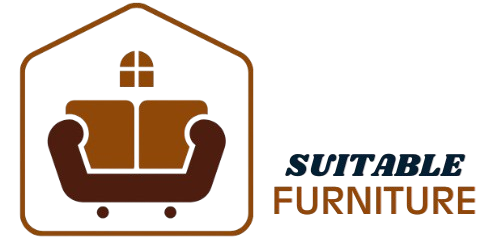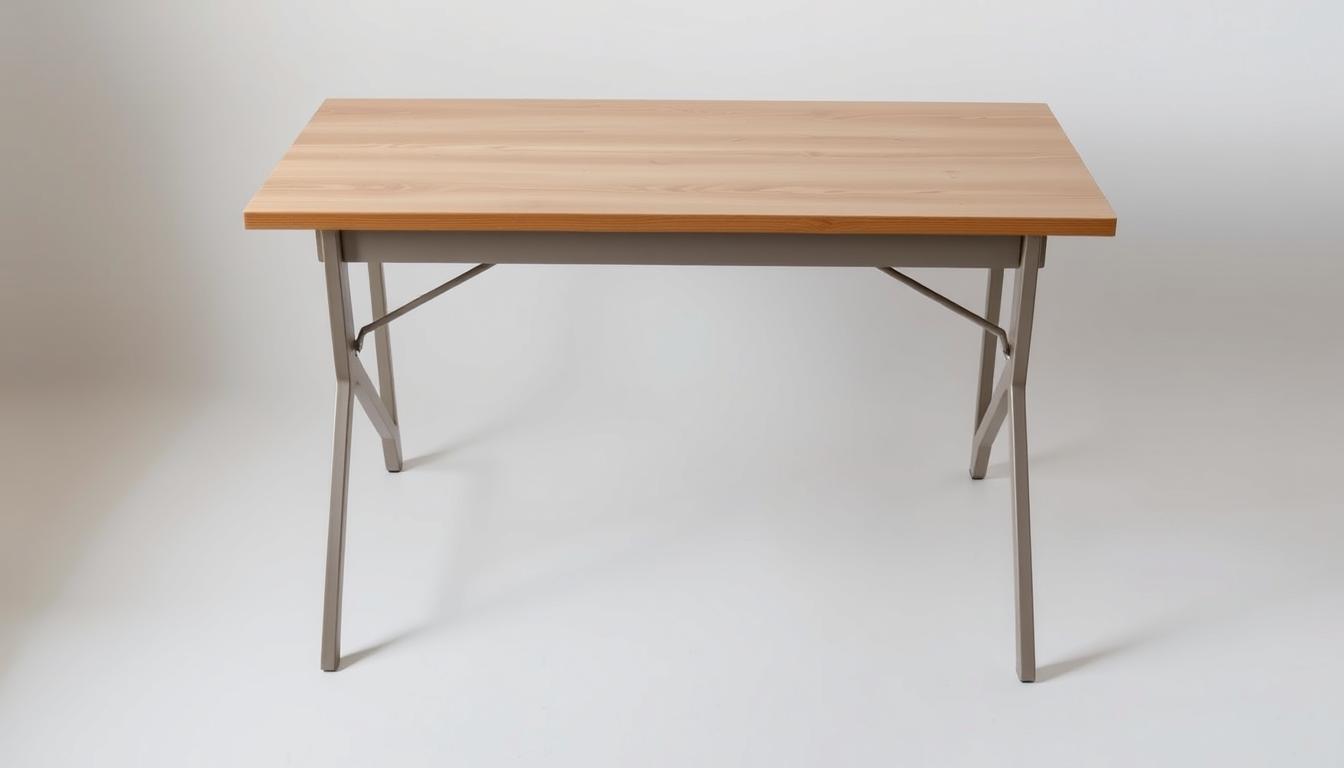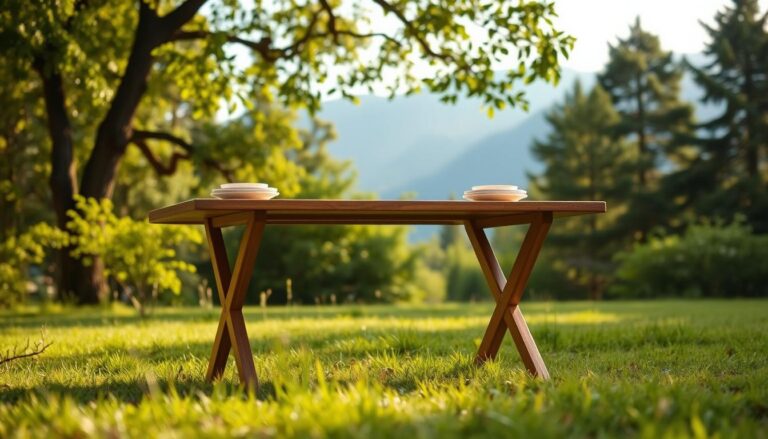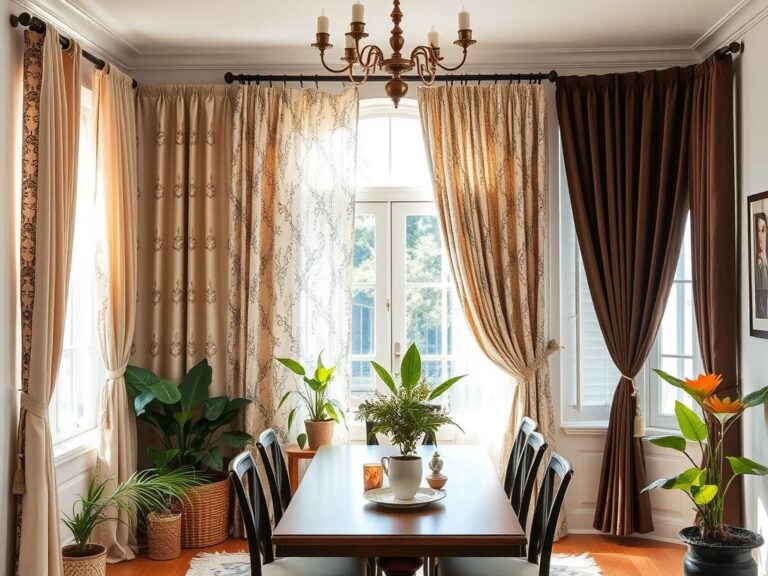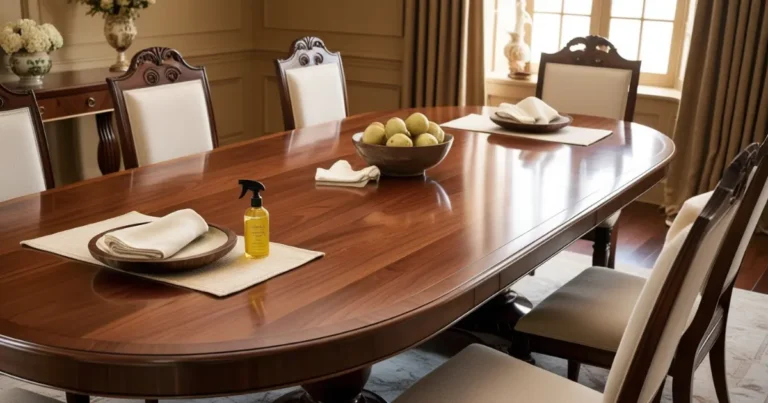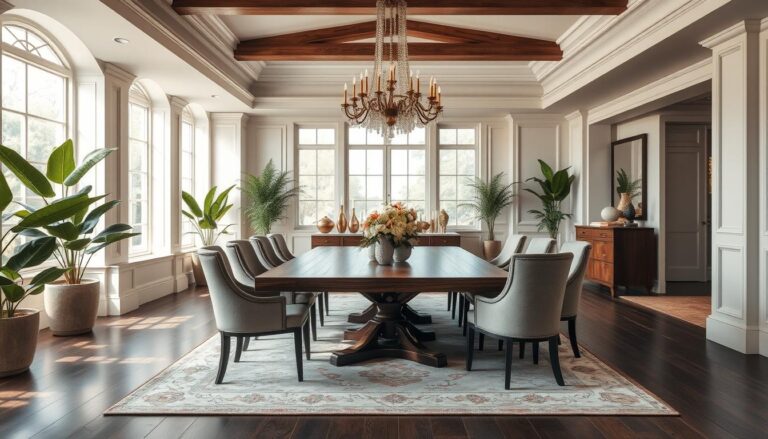Standard Folding Table Sizes: What You Need to Know
Standard folding table size is one of the most important factors to consider when choosing a table for your event, home, or workspace. Whether you’re planning a large gathering or setting up a compact office, knowing the typical dimensions can make a big difference in comfort and efficiency.
The size of a standard folding table can differ. But knowing common table sizes is key for planning. This article will help you understand the different folding table sizes. It ensures you pick the best one for your needs.
Key Takeaways
- Understanding the importance of choosing the right folding table dimensions.
- Overview of different types of folding tables and their typical sizes.
- Guidance on selecting the appropriate table size for various use cases.
- Dimensions to consider for events, home use, and commercial purposes.
- Tips for planning and executing with the right table size.
Why Folding Table Dimensions Matter
Knowing the size of folding tables is key to using them well. They fit in homes, offices, and event spaces. They’re great for eating, working, and showing off things.
Versatility and Convenience Factors
The size of a folding table affects how useful it is. A table that fits its purpose can be set up and taken down easily. This makes it perfect for short-term needs.
A small folding table works well in tiny kitchens or as extra space in home offices. Choosing the right size means it can be stored easily, saving space.
The height and width of a folding table also matter. A table that’s too small or too big is hard to use. The best size balances being useful and easy to move.
Space Planning Considerations
In small places like apartments or RVs, the right folding table size is crucial. It helps create work or dining areas without taking up too much space. Getting the measurements right ensures the table fits well.
Also, think about how the table folds up for storage. A table that folds small can be stored in tight spots, like closets or under beds. By picking the right size, you can make the most of your space.
Standard Folding Table Size Guide
Folding tables come in many sizes. Knowing these sizes helps you use them better. It’s important to pick the right table for dining, working, or showing things.
Common Length and Width Measurements in Inches
Folding tables vary in length and width. They fit different needs and spaces. Common sizes include lengths of 48, 60, 72, and 96 inches. Widths range from 18 to 30 inches for narrower tables and up to 48 inches or more for wider ones.
A 6-foot (72 inches) folding table is great for events. It has enough space for dining or display. Its width is usually between 24 to 36 inches, making it comfortable without being too big.
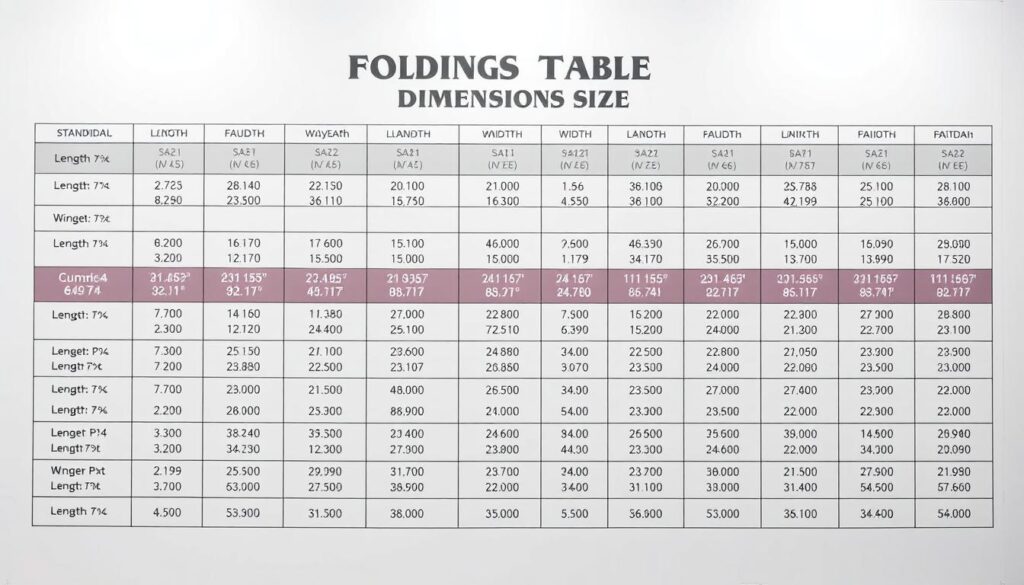
Learn more in our guide to the top 7 folding table dimensions for every need.
Standard Height Options for Different Uses
The height of a folding table is key. It affects how comfortable and useful the table is. Standard heights are 29 to 30 inches, good for most uses.
But, there are exceptions. For example, conference or seminar tables are about 31 inches high for a formal setting. On the other hand, children’s or educational settings use shorter tables, around 26 to 28 inches, for kids.
| Table Type | Length (inches) | Width (inches) | Height (inches) |
|---|---|---|---|
| Dining | 60-72 | 24-30 | 29-30 |
| Conference/Seminar | 96 | 36-48 | 31 |
| Children’s/Educational | 48-60 | 24-30 | 26-28 |
Types of Folding Tables and Their Dimensions
Folding tables come in many sizes and uses. They are perfect for small parties or big events. Knowing the different types and sizes helps you choose the right table.
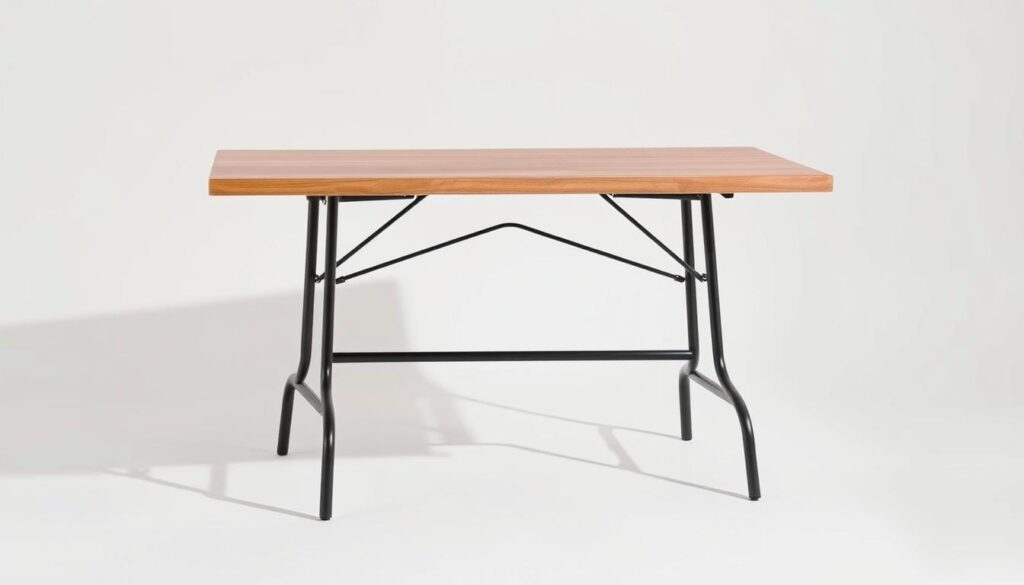
Card and Personal Tables
Card and personal tables are small, great for a few people. They are 34 to 38 inches long. Perfect for card games or a desk in a small room.
Banquet and Rectangular Tables
Banquet and rectangular tables are for bigger groups. They are 6 to 8 feet long. Great for dining or presentations, they fit many people.
- 6-foot tables are good for small events.
- 8-foot tables are better for big gatherings.
Round and Seminar Tables
Round and seminar tables are unique. Round tables, 48 to 60 inches in diameter, help people talk easily. Seminar tables are for presentations, flexible for different needs.
Choosing the right folding table is important. It depends on the event size. Knowing the sizes and uses helps pick the best table.
Comprehensive Folding Table Size Chart
A detailed folding table size chart helps you choose the right tables. It’s useful for events, workspaces, or storage. Knowing the different sizes ensures you pick the perfect fit.
Folding tables are great for many places, like home offices or big events. Knowing their sizes is key to using them well.
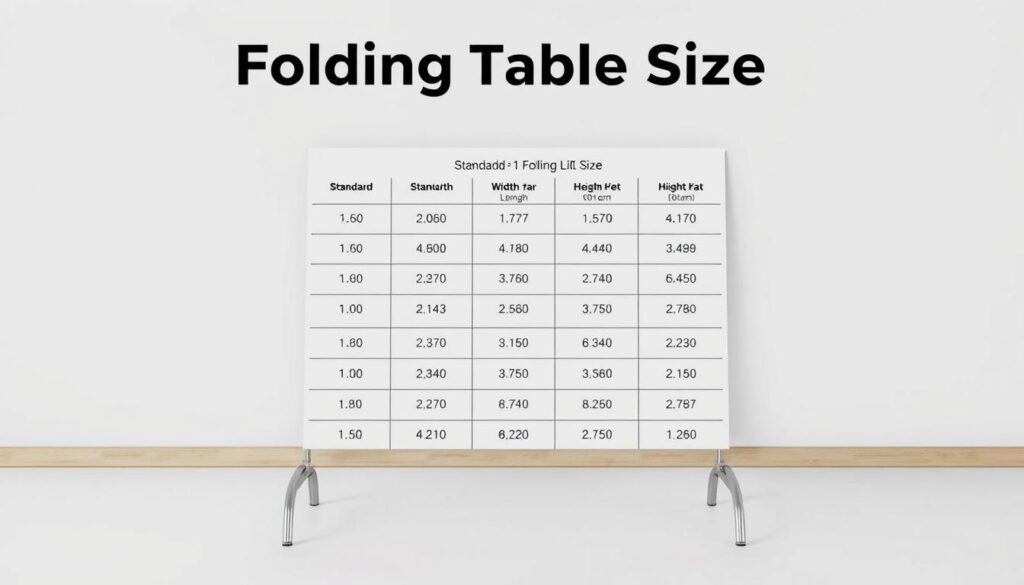
Rectangular Folding Table Dimensions
Rectangular folding tables are popular for their flexibility. They usually come in lengths from 6 to 8 feet and widths from 30 to 42 inches.
- Length: They’re often 72 inches (6 feet) or 96 inches (8 feet) long. This fits different needs and uses.
- Width: You’ll find them in widths of 30, 36, and 42 inches. The 36-inch width is often chosen for many uses.
- Height: Their height ranges from 29 to 31 inches. This height works well for most people.
These sizes make rectangular tables great for conferences, dining, and workspaces.
Round Folding Table Dimensions
Round folding tables are great for places where flexibility matters. They’re measured by diameter.
- Diameter: You’ll find them in diameters of 48, 60, and 72 inches. The 60-inch diameter is a favorite for events.
- Height: Their height is usually 29 to 30 inches, like rectangular tables.
Round tables are perfect for events, trade shows, and social gatherings. They help with interaction and visibility.
Using a detailed folding table size chart helps you find the right size. This ensures your space is used well and functions as it should.
Choosing the Right Folding Table Size for Your Needs
When picking a folding table, think about what you need and how much space you have. Whether it’s for an event, a workspace, or temporary extra space, the right size matters a lot. It affects how well the table works and how easy it is to use.
Assessing Your Space Requirements
Before you choose a table, measure the space where it will go. Take into account any obstacles or limits that might affect where the table can be placed. Also, think about how easy it will be to fold and store the table when you’re not using it.
- Measure the length, width, and any other relevant dimensions of the space.
- Consider the height of the ceiling and any overhead obstructions.
- Think about the flow of traffic around the table and how it will be used.
Matching Table Size to Number of Users
The number of people using the table is key to picking the right size. A good rule is to give each person enough space. For dining, plan for about 24-30 inches per person for comfort and room to move.
- For meetings or workspaces, aim for 15-20 square feet per person.
- For buffets or food displays, plan for 12-18 inches per person for serving and display.
By carefully looking at your space needs and matching the table size to the number of users, you can find a folding table that fits your needs perfectly.
Folding Table Dimensions for Specific Use Cases
Folding tables are great for many uses. They fit well in dining, entertainment, work, study, and big events. Knowing the right size is key to using them well.
Dining and Entertainment Settings
In dining and entertainment, the table’s size matters a lot. A standard table is 30 inches high, perfect for most meals. A 72-inch by 30-inch table can seat 6-8 people well.
For smaller groups, a 48-inch round table is better. It fits 4-6 people comfortably for dinner.
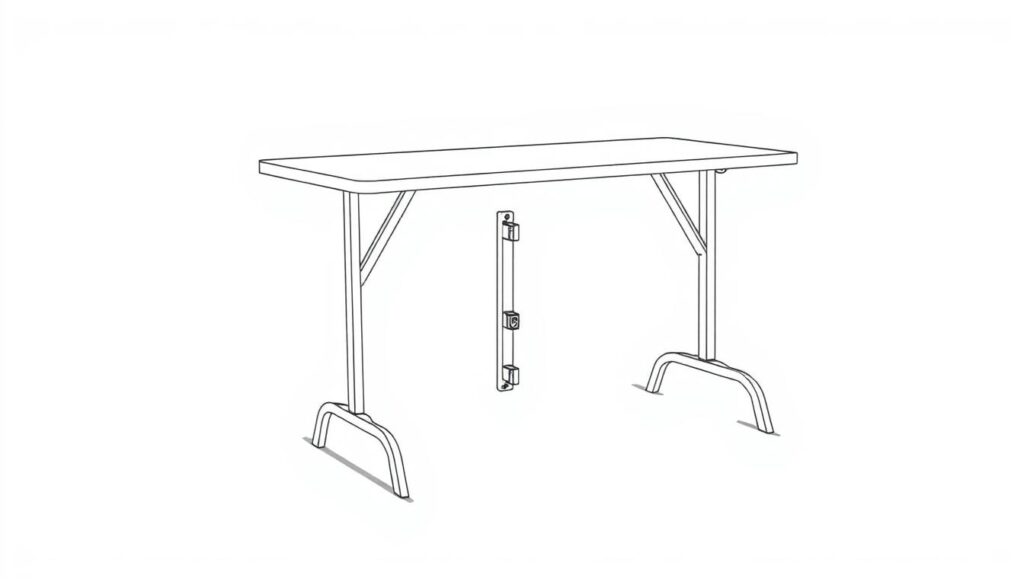
Work and Study Environments
In work and study, the table’s height and size are important. A table that’s too short or too tall can be tiring. For most adults, 29-30 inches is the best height.
A 30-inch by 60-inch table is good for one or two people to work or study together.
Key Dimensions for Work and Study:
- Height: 29-30 inches
- Width: 30-40 inches
- Length: 60 inches
Events and Large Gatherings
For big events, the table size must be bigger. A 72-inch long table is great for banquets and parties. It holds a lot of stuff or works as a buffet.
For really big events, you might need more tables or longer ones (8 feet or more).
| Use Case | Recommended Dimensions | Capacity |
|---|---|---|
| Dining | 72″ x 30″ | 6-8 people |
| Work/Study | 30″ x 60″ | 1-2 people |
| Events | 72″ x 30″ or larger | Variable |
How to Measure a Folding Table Correctly
To pick the right folding table, knowing how to measure it is key. It’s not just about the length and width. You need a full plan to make sure it fits your needs.
Essential Measuring Tools
First, get the right tools. A flexible measuring tape is a must for accurate measurements. Also, a calculator is handy for math, like area or size comparisons.
Step-by-Step Measurement Guide
Measuring a folding table has several steps:
- Measure the length: Use the tape along the longest edge to find its length in inches.
- Measure the width: Place the tape along the shorter edge, at a right angle to the length.
- Measure the height: This is key for use. Measure from the floor to the table’s top.
- Measure the folded dimensions: Also, measure the folded table’s length, width, and height.
Here’s what the measurements might look like in a table:
| Dimension | Measurement (inches) |
|---|---|
| Length | 72 |
| Width | 30 |
| Height | 29 |
| Folded Length | 36 |
| Folded Width | 30 |
| Folded Height | 4 |

By following these steps and using the right tools, you can get accurate measurements. This helps you find the perfect folding table for your needs.
Folding Dimensions and Storage Tips
Folding tables are made to save space. But, their folded size can change a lot. It depends on the material and how they’re built.
The thickness of a table when folded depends on its material and design. For example, tables made from lighter materials fold thinner. This is compared to those made from heavier materials.
Typical Folded Thickness by Material
Different materials have different folded thicknesses.
| Material | Typical Folded Thickness (inches) |
|---|---|
| Plastic | 2-4 |
| Metal | 3-6 |
| Wood | 4-8 |
Storage Space Requirements and Solutions
Storing folding tables well needs good planning. Think about the folded size and how you’ll store it.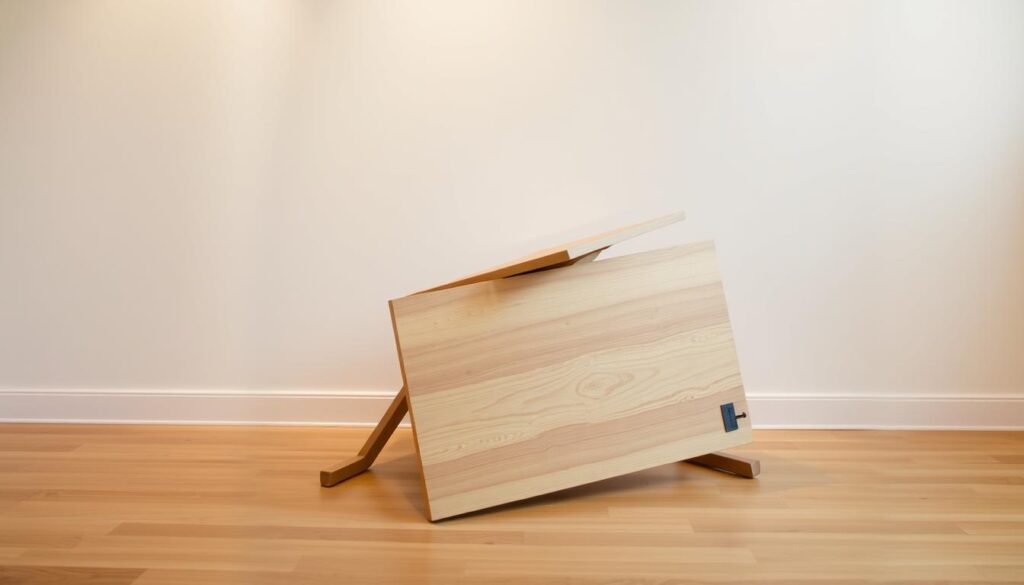
For the best storage, measure your space first. Then pick a storage option that fits the table’s folded size. You might use wall racks or under-bed storage.
Knowing your table’s folded size and using smart storage can really help. You’ll save space and keep things tidy.
Materials Impacting Folding Table Size and Weight
The size and weight of a folding table depend on the material used. Each material has its own benefits and drawbacks. These affect how useful and portable the table is.
Folding tables come in different materials like plastic, wood, and metal. Each material affects the table’s size and weight.
Plastic Folding Tables: Lightweight Options
Plastic folding tables are light and easy to move. They’re great for outdoor events or places where tables are moved often. Their light weight is perfect for frequent setup and teardown.
- Easy to clean and maintain
- Resistant to weather conditions
- Available in various colors and designs
Wood Folding Tables: Classic Dimensions
Wood folding tables have a classic look and feel. They’re often used in formal settings or where looks matter. Wood tables are sturdy and can hold a lot of weight, even though they’re heavier than plastic ones.
Key characteristics include:
- Durable and long-lasting
- Aesthetically pleasing
- Can be stained or painted to match decor
Metal Folding Tables: Durability Factors
Metal folding tables are known for their durability and strength. They’re perfect for heavy-duty use. You’ll find them in places like banquet halls or conference centers, where tables get used a lot.
Key benefits of metal folding tables include:
- High weight capacity
- Resistant to scratches and dings
- Easy to fold and store
Best Folding Table Sizes for Different Room Types
The right folding table size can greatly improve your space use. This is true for kitchens, patios, RVs, or offices. Choosing the right size is key to making your space more functional and convenient.
Kitchen and Dining Areas
In kitchens and dining areas, a small folding table works best. A 30-40 inch wide and 48-60 inch long table is great for extra dining or work. For tiny kitchens, a 24 inches wide and 36 inches long table saves space.
Discover creative ways to use a small folding table in tight spaces.
Patios and Outdoor Spaces
Outdoor spaces need bigger tables for more guests. A 6-foot rectangular table fits 6-8 people well. For smaller areas, a round folding table with a 42-48 inches diameter is better.
For outdoor setups, check our guide on folding table sizes for outdoor activities.
RVs and Small Living Spaces
In RVs and small spaces, choose compact, lightweight tables. A 24-30 inch wide and 36-48 inch long table is perfect. For very small spaces, a wall-mounted table is a good choice.
Office and Commercial Settings
In offices, table size depends on the use. For meetings, a 6-8 foot long table is common. For small offices, a 4-foot round or rectangular table is better, fitting a few people.
Choosing the right folding table size improves your space, whether for dining, work, or fun. Think about each room’s needs to pick the best table size.
Comparison Table of Popular Folding Table Dimensions
The size of a folding table matters a lot. It affects how useful and easy it is to use. Choosing the right size is key when planning events or managing space.
4-Foot vs. 6-Foot Tables: Space and Capacity
Choosing between a 4-foot and a 6-foot table depends on the space and people you need to fit. A 4-foot table is great for small gatherings or tight spaces. It’s a compact option that still offers enough room.
A 6-foot table has more room for people and things. It’s better for bigger events or more complex setups.
The capacity of these tables also differs. A 4-foot table can seat 4-6 people. A 6-foot table can fit 6-8, depending on how you arrange it.
Not sure about 5-foot options? Explore the best 5-foot folding table models here
Round vs. Rectangular Options: Pros and Cons
The shape of a table is also important. Round tables encourage talking and are good for dining or networking. But, they might not be as space-efficient as rectangular tables.
Rectangular tables are versatile and fit well in many spaces. They’re great for presentations or serving food. While they don’t promote as much conversation as round tables, they’re practical for many uses.
| Table Type | Length/Diameter | Width | Seating Capacity |
|---|---|---|---|
| 4-Foot Rectangular | 48 inches | 30 inches | 4-6 |
| 6-Foot Rectangular | 72 inches | 30 inches | 6-8 |
| Round | 48 inches (diameter) | N/A | 4-6 |
6 Foot Folding Table Dimensions and Applications
Looking for a space-saving yet functional table? 6-foot folding tables are perfect. They’re great for events, parties, offices, and homes.
Standard Measurements and Weight Capacity
A standard 6-foot folding table is 72 inches long and 30 inches wide. It’s about 29 inches tall, making it easy for most adults to use. These tables can hold anywhere from 150 to 300 pounds, depending on the material.
Key Dimensions and Weight Capacities:
| Length (inches) | Width (inches) | Height (inches) | Weight Capacity (pounds) |
|---|---|---|---|
| 72 | 30 | 29 | 150-300 |
Ideal Use Cases and Seating Capacity
Six-foot folding tables are great for many things. They’re perfect for dining, working, crafting, and displaying items at events. They can seat 6-8 people, depending on the chairs and comfort level.
When planning events or setting up furniture, remember the table’s dimensions and weight capacity. They’re a flexible option for extra space without needing a permanent setup.
Conclusion
Knowing the different folding table sizes is key to picking the right one. We’ve looked at various dimensions, types, and uses. This shows how versatile and handy folding tables are.
Choosing the right folding table depends on several things. These include the space you have, how many people will use it, and what you need it for. Looking at the folding table size chart can help you decide.
Folding tables come in sizes from 34 to 96 inches long and 18 to 30 inches wide. They also have different heights for different uses. Picking the right table means matching your needs with the right size and type.
By choosing wisely, you can make the most of your folding table. It can be for dining, work, or events. The right table brings convenience, flexibility, and smart use of space.
